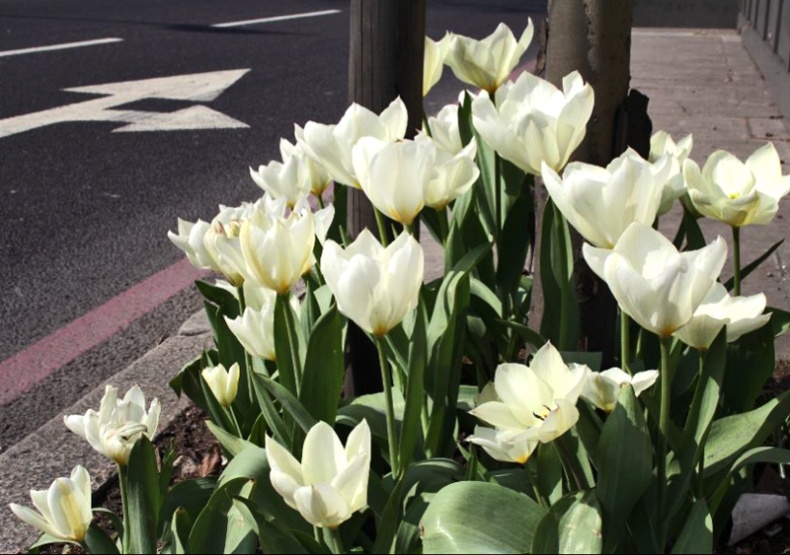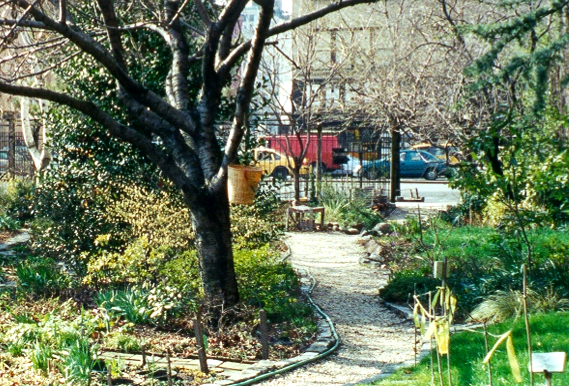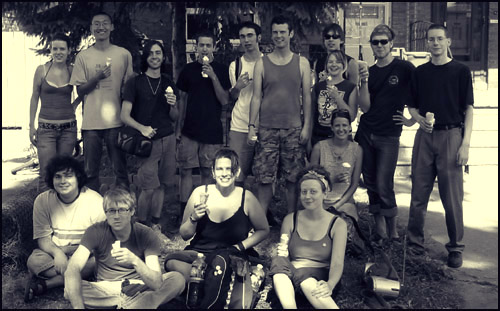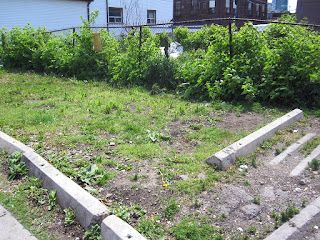
Guerrilla Gardening
Have you ever walked through the city and thought to yourself, "Wouldn't this place be so much nicer if someone took care of it?" Chances are you have since there are too many wasted spaces in each of our towns and cities. Fortunately, there is a group of people who can't stand the sight of neglected, barren, or overgrown public spaces, and they're known as "guerrilla gardeners."
What Is Guerrilla Gardening?
The Spanish "guerrilla" can be translated as "little war." Guerrilla gardening can therefore be perceived as a "war on ugly spaces" or more specifically an unconventional act of illicit gardening performed by people who are tired of the downtrodden appearance of their cities, neighbourhoods, or communities. They usually turn up late at night to plant bulbs in unsightly areas of the city without permission. Even though they do this illegally, their actions are not violent and most people tolerate their actions. Moreover, many guerrilla gardeners enjoy an outpouring of support from their communities. When it comes to the authorities, however, the warriors armed with gardening tools are often considered vandals and are questioned by police.
History of the Movement

The first community garden
in New York
Although guerrilla gardeners are said to have been active in the UK since the 17th century, the movement officially began in the 1970s when Liz Christy and her fellow volunteers decided to cultivate vacant land in New York. The abandoned piece of land lay behind a high fence. They couldn't get over it, so they created seed bombs from old Christmas tree ornaments and balloons, packed them with wildflower seeds, water, and fertilizer, and threw them over the fences. The first community garden in New York was born when the city decided to lease some land for $1 to Liz and her friends from Green Guerillas, the organization she founded. Nowadays, the garden honours Liz's name and anyone can visit in on East Houston Street between Second Avenue and Bowery. Since the '70s, the idea of fighting against plain and ugly has spread across the globe and it continues to attract more and more support. From tiny bits of activity such as planting herbs along the banks of a canal in Great Britain to beautifying whole communities in the U.S., it has become a popular activity among people of all ages.
Nowadays, groups of guerrilla gardeners can be found pretty much anywhere. In Canada alone, there are individuals and organizations spread across the whole country. To get involved, you don't need botany degree or any special course. All you need is a willingness to work and sacrifice a little bit of your time. The motivation for getting involved can range from a love of gardening or a form of political protest to simply improving the quality of life in a particular neighbourhood. What unites all these guerrilla gardeners is that their only reward is the good feeling of a job well done and the improved beauty of their chosen area.
Guerrilla Gardening In Canada

TPSC
Vancouver was the first Canadian city to engage in the movement when Dave and Julie Smith planted sunflower seeds on a newly erected traffic circle, which led to the founding of an official Green Streets program. In Toronto, the Guerrilla Gardening program officially started in 2001 when the Toronto Public Space Committee (TPSC), a volunteer-run, non-profit organization, was created to advocate sustaining the city's public spaces. Guerrilla Gardeners was one of the first and most successful projects to come out of the committee.
The Toronto Public Space Committee is divided into four parts: West Group, Annex Group, East Group, and Downtown Group. The organization does not receive any government funding; it survives on donations alone. If you want to make a donation (plant material, soil, seeds, etc.) or want to get more information, have a look at TPSC's website.
Getting Started
Even though beautifying an otherwise neglected space sounds like a great and praiseworthy idea, you need to remember that it is still considered illegal and therefore you should think twice before getting involved. However, if there is a little bit of activism in you and you are aware of the possible implications of your actions, here are some tips that you should keep in mind:
-
What you need to do first is find orphaned land in your neighbourhood. You'll be surprised how many little patches of land no one cares for. And you will be even more amazed how much life you can create on such a tiny piece of urban space — not to mention the joy you will get every time you walk past it. It's good to pick a spot close to your home if you intend to take care of it on a regular basis.
Guerrilla Gardening
Community, Downtown
Planting - Plan the gardening mission in advance. Since it is considered an illegal activity, try to do the work during the night. Having a friend around is a big help when it comes to planting, but also watering and maintenance. Moreover, it's more fun to garden in groups of two or more.
- Picking the right plants is an essential part of guerrilla marketing. Focus on plants that naturally grow in the area and that do not require extensive care. It's a good idea to talk to other guerrilla gardeners to figure out which plants might work. There is even a worldwide guerrilla gardening community where people from all over the world discuss their ideas, plans, and advice. If you're lucky enough, you will find some spare plants in your own garden; perhaps some of your friends will offer you their help. Otherwise, start searching in cheap DIY markets, wholesalers, and supermarkets. The golden rule is the cheaper, the better.
Do not forget to choose drought-resistant and cold-resistant plants. Also, the more colourful they will are, the more interesting they will look. Shrubs, rosemary, lavender, cilantro, and basil are ideal plants for this purpose but there are a lot more options. - Gear up to protect yourself from mud or dust with suitable shoes. Wear gloves to lower the risk of skin irritations or cuts. You may want to use insect repellent, and of course you must not forget to bring your hand tools with you.
Once the plants are seeded:
- Water regularly. The closer your chosen spot is to a water source, the better. Think twice before you take action because lack of water can be a serious problem. The bigger the spot, the more water you will need.
- Make your plants grow faster. The plant cannot grow without nitrogen, phosphorus, and potassium. Therefore what you need to do is supply these nutrients to the plants in the form of fertilizer.
- Spread the word. Take pictures of your little garden and show the world that it doesn't take much to make your city a nicer place to live.

On Guerrilla Gardening:
A Handbook for Gardening
Without Boundaries
To give you a better sense of what it's all about, there are a number of books on the topic of guerrilla gardening.
On Guerrilla Gardening: A Handbook for Gardening Without Boundaries
One of the most famous horticultural warriors, Richard Reynolds, has devoted his life to guerrilla gardening — well, most of his life. He works as a freelance advertising planner by day, but when night falls on London, he joins other activists, and the transformation of unused public space into tiny green oases begins. In this book, Richard not only uncovers the history of the movement but also gives valuable advice to wannabe guerrilla gardeners.
Guerrilla Gardening: A Manualfesto
The book written by David Tracey, a journalist and environmental designer living in Vancouver, was inspired by its author's interest in engaged ecology, the idea of creating wilderness in urban areas through design. The book itself is a combination of David's own thoughts and some practical advice for those who want to get involved.
SeedBombs: Going Wild with Flowers
Josie Jeffery's book is dedicated to seed bombs. It gives you a chance to learn more about their origins and benefits our environment. This book encourages its readers to grow plants in all sorts of places; it presents 13 unique recipes for seed bombs. While some of them are designed to grow plants to attract birds, butterflies, or bees, others are meant to promote colours, scents, and a sense of well-being.






